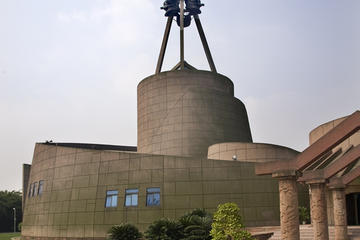Sanxingdui Museum
TIME : 2016/2/22 10:14:46

Sanxingdui Museum
When a Sichuan peasant in 1929 unearthed a piece of jade while digging ditches in a field, he set in motion a chain of events which would lead to the largest discovery of Shu relics known to modern China. Located 25 miles (40.2 kilometers) north of the city of Chengdu, the Sanxingdui (Three Star Piles) Archeological Site covers an area of nearly 5 square miles (12.9 square kilometers) and has yielded thousands of cultural Shu relics which are now on display at the Sanxingdui Museum.
Though mass excavations began in earnest in the early 1930s, it was the unearthing of two sacrificial chambers in 1986 which sent shockwaves through the archeological community. Included amongst the buried relics were ornate and peculiar bronze facial masks dating back nearly three thousand years as well as gold and jade objects which help prove that the Sanxingdui area was the capital of the Ancient Shu kingdom.
All of the relics which are now on display in the museum hold particular cultural, historical and scientific value, and are regarded as some of the finest and most insightful pieces of Sichuan culture ever to be unearthed. In addition to the myriad smaller artifacts discovered at Sanxingdui, larger pieces such as a 12 foot (3.7 meter) tall bronze tree and 8 foot (2.4 meter) tall bronze statue comprise some of the more mystifying and exceptional relics currently on display.
In addition to the treasures themselves an entire section of the Sanxingdui Museum is devoted to the archeological process of locating, removing and caring for objects which are miraculously intact after sitting forgotten for thousands of years. Open to the public since 1997, Sanxingdui Museum is a true cultural treasure set just on the outskirts of modern Chengdu.
